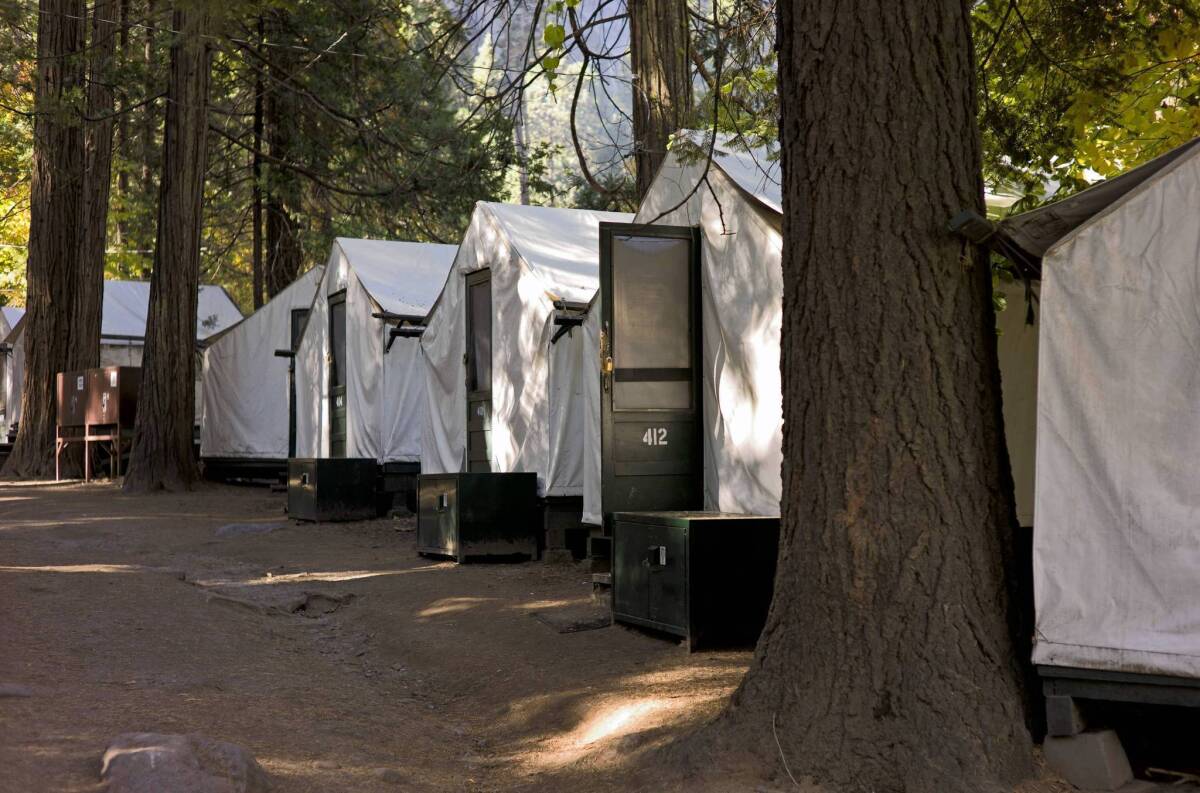Yosemite officials broaden hantavirus notification effort

Yosemite officials have broadened their effort to contact people potentially exposed to hantavirus at the national park, reaching out to more than 1,000 additional visitors and preparing an alert to healthcare providers nationwide.
Park officials have now sent emails and letters to about 2,900 people who stayed in one of the “signature tent cabins” in Curry Village between June 10 and Aug. 24, when at least three lodgers were infected with the rodent-borne virus, park spokeswoman Kari Cobb said. Two of the lodgers later died, while another recovered. Officials said another case traceable to the cabins was probable.
The measures Wednesday significantly broadened the network of health officials who can search for potential outbreaks of hantavirus pulmonary syndrome, a flu-like disease that attacks the lungs. Officials spent Wednesday working with the national Centers for Disease Control and Prevention to issue an alert through a nationwide health advisory network that reaches healthcare providers, not just government health departments, according to Dr. David Wong, an epidemiologist with the National Park Service’s Office of Public Health.
“The notification is our No. 1 priority,” Wong said. “We don’t want to just rely on email for that ... we want to come up with other strategies to make sure that people hear about this.”
Hantavirus is rare — only 587 cases were identified in the United States between 1993 and December 2011 — and officials said they haven’t seen more than one case in the same location in any year.
“This cluster is unusual. The thing that we’re trying to figure out is why there seems to be a higher risk here,” Wong said. “That’s what worries us.”
All 91 signature tent cabins have been closed as crews clean the structures and tear out wooden interior walls, where they have found deer mouse droppings and nests in the insulation, Cobb said. Guests have been relocated to other areas of the park.
Officials blame the design of the cabins, built in 2009 to replace cabins destroyed the year before by a rock slide, Cobb said. The mice have entered the cabins through small gaps in the walls, which crews are now working to close.
Because the three people affected by hantavirus stayed within 100 feet of one another, officials don’t believe the mice pose the same threat in other areas of the campground.
But recent visitors said they were still concerned. Steve Loughran spent the weekend of Aug. 18 in a Curry Village cabin with his wife and 10-year-old son, part of a summer holiday from Bristol, England.
Loughran said that when they arrived to stay at the non-signature cabins, they were not advised about the disease.
More unsettling, Loughran said, were the “layers of dust” and leftover almonds his family discovered underneath their beds, as hantavirus is often spread through dirt and dust that carries droppings, urine and saliva of infected mice.
“I still think our risk is very low, but there’s just uncertainty,” Loughran said. “We don’t know what’s going on right now.”
Ara Ishkhanian, 46, of Burbank stayed in Curry Village about two weeks ago with his wife, three young children and in-laws. They weren’t in the signature tents, but Ishkhanian said he spotted a deer mouse climbing on one of the family’s bicycles during their stay.
They’ve spoken to two doctors and are waiting to see if any symptoms show.
“Right now we’re just waiting for that five-week period to be over,” he said. “We’re a little nervous.”
More to Read
Start your day right
Sign up for Essential California for news, features and recommendations from the L.A. Times and beyond in your inbox six days a week.
You may occasionally receive promotional content from the Los Angeles Times.







